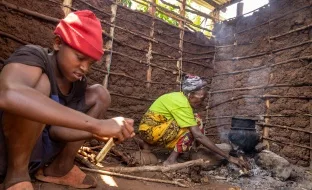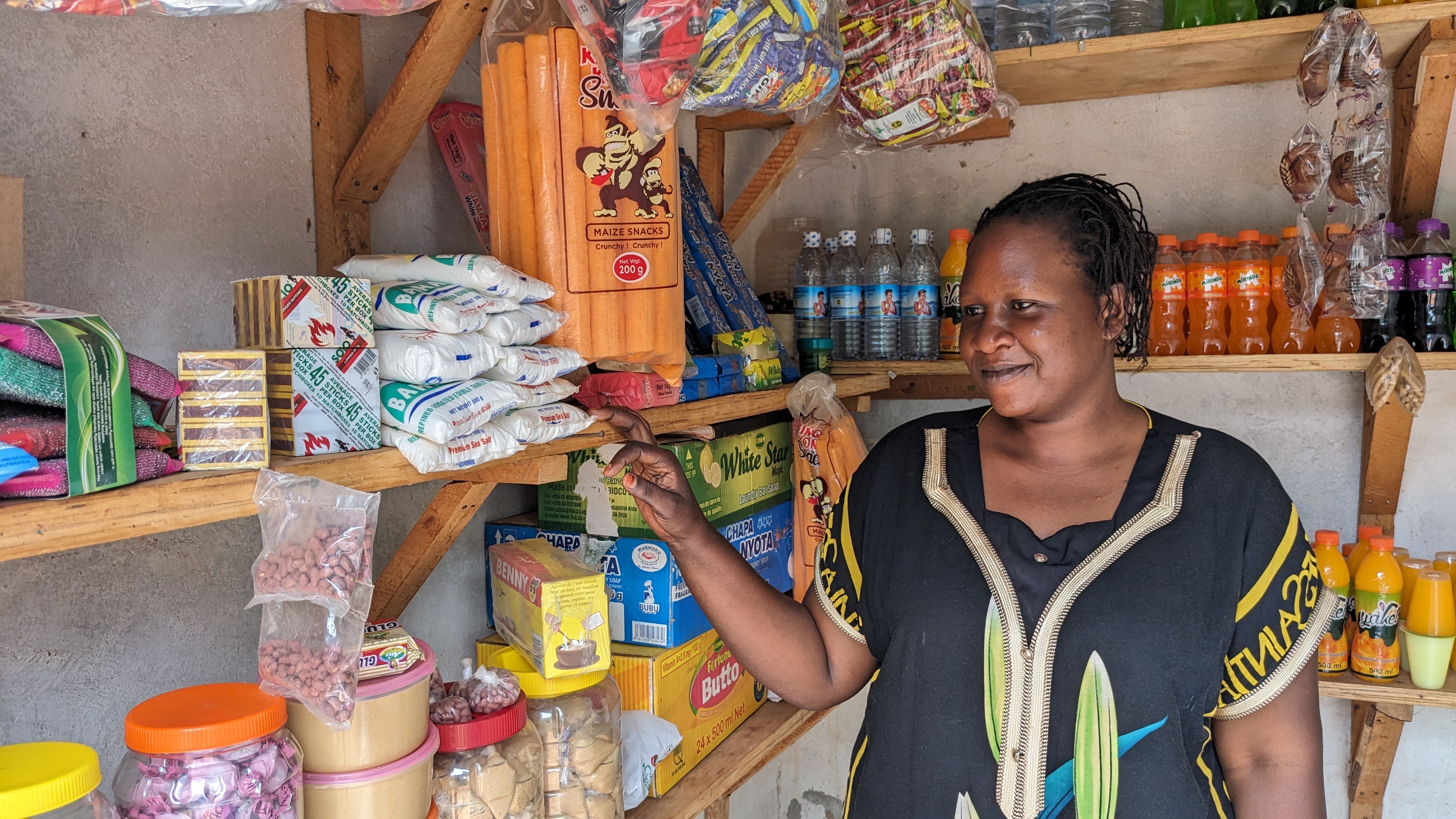Joice was living in poverty when she received a cash transfer from GiveDirectly’s donors in 2014. Now she is a GiveDirectly field officer whose job includes telling new recipients about GiveDirectly. This is her story.
I was born in Kisumu County and I was married in Siaya County. I had great dreams of improving my life but due to poverty that included poor shelter, lack of enough food and even clothing, I felt that it was very hard to liberate myself from that situation. Many would see me as malnourished and illiterate, and with low self-esteem I could not improve my life whatsoever.
My mother-in-law had a small shop (kiosk), where she used to sell basic commodities like local milk packaged in polythene bags, tomatoes, and packaged sugar. I joined her and at the end of the day expected an income which would not be sufficient for a single meal. This meant that I often went without two meals in a day, though sometimes in a good day I would manage breakfast and supper without lunch. Her shop was my main place of hope, as both a source of survival and daily income.
I first heard about GiveDirectly in 2013, when the organization was working in a neighboring village in Siaya.
Just like many other native village folk I first thought GiveDirectly was president Barack Obama’s project to improve the livelihoods of the Kogello village people. A few months later, one Sunday at a church service at Wang Chieng Ack Church, members were informed that GiveDirectly would be visiting our village and we were asked to assemble at Wang Chieng Primary School for a town meeting, or baraza.
I can’t recall the exact date but I remember it was early 2014 in the afternoon when the GiveDirectly team came for the baraza at the school. They took us through what they do, where the donors come from, and that their main aim was to eradicate poverty at the household level through unconditional cash transfers directly from donors to recipients. At the baraza I realized that GiveDirectly is an independent, non-governmental organization whose aim was to make a change in our lives.
Then the census team came to our house. One thing I can never forget is my token number which was 6875. Next, the registration team came, and I was enrolled into the program. I opted to receive a phone from GiveDirectly because at that time I only had one phone that I was sharing with my spouse. Even with the new phone, our lives suddenly changed and communication became easier.
In less than two months after registration, I received my first transfer of 7,000 KES which, after agreement with my spouse, we used to first buy a goat for 3,000 KES. The remaining cash was used for buying food. After two months, I received my second transfer which was 40,000 KES.
This was a turning point in my life. I had finished my diploma education, but my certificates were still held at the University due to outstanding fee arrears. So I prioritized my education and cleared the fee arrears. Nearly everyone else used the transfer in constructing new houses, but I personally didn’t see the sense in that option. I got my certificates before getting my last transfer, in March 2015. Then, as a family we decided to move out of the village to Kisumu. We started a shoe business, which my spouse took charge of as I was busy searching for job opportunities in various offices.
Last November I saw an advertisement from GiveDirectly that they were hiring field officers to work in Kisumu and Homa Bay Counties. I applied and I was called for the interview but unfortunately I was not offered the job.
But I didn’t give up. This year, I applied again and on May 3rd, 2016, I joined the GiveDirectly family.
I am currently part of a new experimental campaign at GiveDirectly that is testing a new model of sending cash transfers. My tasks involve: 1) conducting community entry meetings; 2) enrolling recipients into the program so that they are able to receive transfers; 3) performing quality surveys and checks of recipients; 4) guiding and mentoring a new field officer on how to work well in GiveDirectly; and 5) maintaining data integrity. I am so happy being here. I enjoy each and every single day at GiveDirectly.
Now, I live in rental house in Kisumu with my family of seven: two biological daughters and relatives from my spouse’s side. I go back to my village often, and I still own and live in my grass-thatched house when there. It’s not a big deal to me because I know that with a stable job like the one I am doing at GiveDirectly, I will build a nice and modern house.
I thank GiveDirectly for the positive impact they have made in my life and the entire homestead. I share my story every day.

